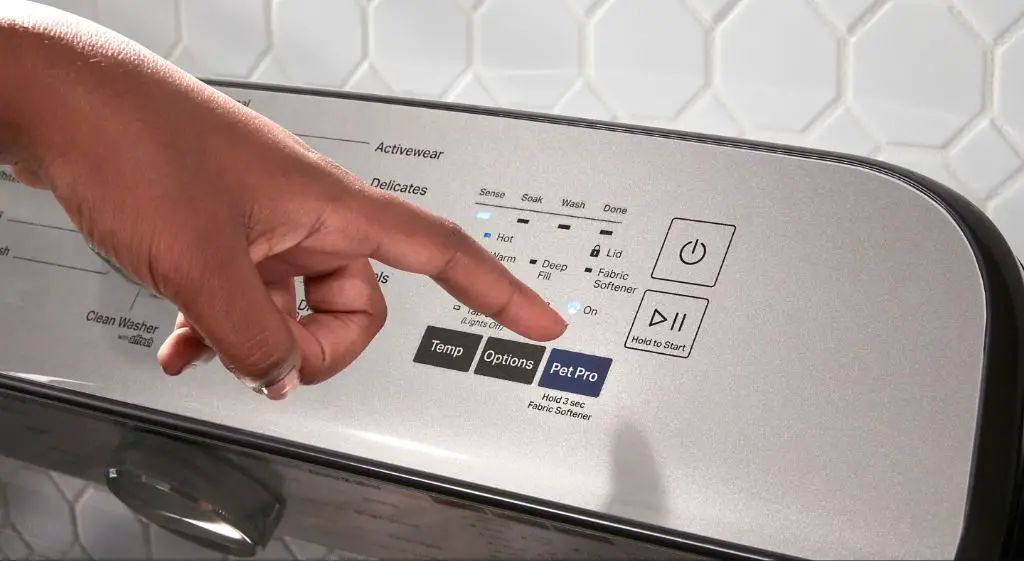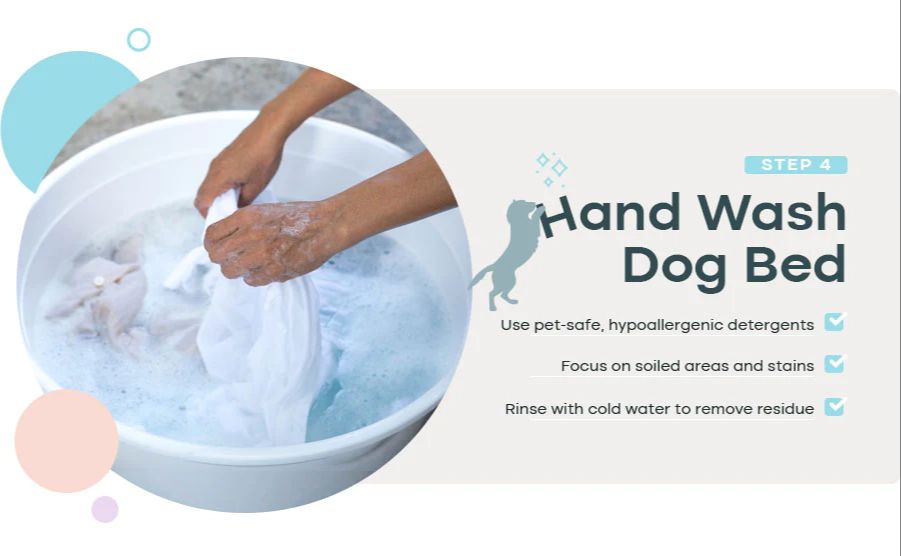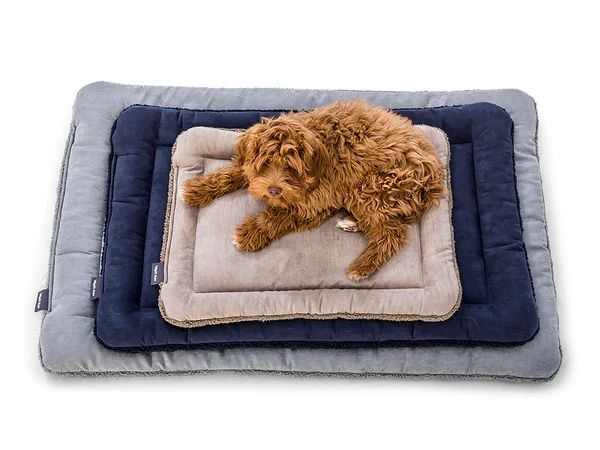Introduction
Keeping your dog’s bed clean is an important part of providing a healthy environment for your pet. While dogs naturally carry dirt and odor into their beds, regular washing can help eliminate bacteria, allergens, and smells.
This article provides tips on the ideal washing temperature, frequency, methods, and products to clean your dog’s bed thoroughly. The goal is to help dog owners establish an effective cleaning routine to remove grime and stains while preserving the bed’s condition.
Recommended Washing Frequency
Most experts recommend washing your dog’s bed at least once every two weeks. However, the ideal washing frequency depends on several factors:
- Number of dogs using the bed
- Activity level and tendency to get dirty
- Whether your dog sleeps in the bed with toys that can get dirty and transfer to the bed
- Amount of outdoor time and exposure to dirt/mud
- Health conditions like skin allergies that benefit from more frequent washing
- Type of filling – cedar chips vs polyfill vs memory foam

For dogs who spend time outdoors and get muddy or dirty frequently, weekly washing is best. Clean bedding helps control fleas, bacteria and odors. Dogs with allergies also benefit from weekly washing. For indoor dogs who use bedding sparingly, every 2-4 weeks is sufficient. Monitor the bed’s condition and wash as needed when visibly dirty or smelly.
Spot Cleaning vs Deep Cleaning
There are two main types of washing for dog beds: spot cleaning and deep cleaning.
Spot cleaning involves treating isolated stains or accidents as they occur. This can be done by gently blotting the affected area with a damp cloth, using an upholstery cleaner, or spot-treating with an enzyme-based pet odor eliminator. Focus spot cleaning on the soiled area only, without fully soaking or washing the entire bed.
In contrast, deep cleaning is a more thorough process done 1-4 times per year. Deep cleaning aims to sanitize the entire bed, remove odors, and restore it to a like-new condition. This requires fully washing the cover and interior cushion if removable. Deep cleaning is recommended seasonally, any time the bed appears dirty, before storage, or after a puppy graduates to an adult bed.
Spot cleaning preserves the bed in between deep cleaning cycles. It’s an easy way to remove new stains before they set in. However, spot cleaning alone is not sufficient over time. Periodic deep cleaning is still required to kill bacteria, remove built-up grime, and refresh the bed completely.
Washing Machine or Hand Wash
Both washing machines and hand washing are effective options for cleaning dog beds, with some key differences between the two methods.
Washing machines are convenient, quick, and give a thorough clean. The agitation and spin cycle helps to fully wash and rinse dog beds, removing more dirt, hair, and odors compared to hand washing. Washing machines also allow you to use hot water and sanitizing cycles. However, the rough tumbling can be harsh on some fabrics and materials like memory foam or microfiber. Over time, it may damage the structure or cause shrinkage.
Hand washing allows for a gentler clean, which is better suited for delicate beds. It prevents wear and tear from machine agitation. The manual scrubbing also lets you target heavily soiled areas. However, hand washing takes more time and effort. It may not remove as much pet hair or deep stains compared to a washing machine cycle. You’re also limited to the temperature of water you can withstand on your hands.

Consider the material and construction of the specific dog bed when deciding between these two washing methods. Hand washing is recommended for beds that are not machine-washable. For sturdy machine-washable beds, the convenience and vigorous wash of a washing machine can be beneficial.
Water Temperature
When it comes to washing dog beds, water temperature is an important consideration. The ideal water temperature for washing dog beds is warm or lukewarm. You’ll want to avoid using hot water, as this can cause the fabrics, fillings, and materials that make up the dog bed to shrink or become damaged. Very hot water can also set in stains and odors rather than removing them.
Cool or cold water is not recommended either when machine or hand washing dog beds. Cool water does not allow detergents to activate properly to lift dirt, oils, and other debris from the dog bed materials. Lukewarm water around 100 degrees Fahrenheit is ideal for getting dog beds thoroughly clean while being a gentle temperature that will not harm the bed.
Always check the tag on your dog bed for the manufacturer’s recommendations on water temperature. But in general, warm or lukewarm water is the ideal temperature for effectively cleaning dog beds and allowing them to air dry properly after washing.
Detergent
When washing dog beds, it’s important to use a gentle detergent that won’t irritate your dog’s skin. The best detergents for washing dog beds are:
- Sensitive skin or hypoallergenic laundry detergents – These are formulated to be extra gentle and minimize potential allergens or irritants. Look for detergents labeled as “free and clear” or for sensitive skin.
- Non-scented detergents – Fragrances in laundry detergent can bother some dogs, so fragrance-free is a good option.
- Natural or organic detergents – Plant-based, biodegradable detergents are gentle and eco-friendly. Make sure to avoid detergents with added optical brighteners.
It’s best to avoid regular laundry detergents, especially those with strong perfumes or dyes. Stick to gentle, hypoallergenic formulas to get your dog’s bed fresh and clean without irritation.
Drying
It’s important to dry your dog’s bed thoroughly after washing to prevent mold or mildew from forming. Here are some tips for properly drying dog beds:
Air Dry Outside: If possible, hang or lay the dog bed outside on a sunny day. The fresh air and sunlight will help eliminate odors and naturally dry the bed. Make sure to bring it inside before nightfall.
Air Dry Indoors: Lay the dog bed flat and allow it to completely air dry indoors. Place it in a well-ventilated area away from humidity. Point a fan towards it to speed up drying time.
Tumble Dry Low: If you used a washing machine, you can tumble dry the dog bed on low heat. This prevents over-drying or heat damage. Remove promptly when finished to avoid shrinking.
No Heat Drying: Never use high heat settings when machine drying dog beds, as this risks damaging the materials. Use an air dry or no heat tumble setting.
Fluff Periodically: To maintain fluffiness, periodically fluff and reshape the dog bed while drying. This helps restore loft.
Check Inner Lining: Ensure any inner waterproof lining or interior foam are completely dry before re-assembling to avoid moisture getting trapped inside.

Sanitizing
Sanitizing and disinfecting your dog’s bed on a regular basis is important to prevent the spread of bacteria, viruses, parasites, and fungus that can cause illness. Here are some tips for properly sanitizing dog beds:
– Use a pet-safe disinfectant and follow the product instructions. Look for EPA-registered products that are non-toxic and specially formulated for use around pets. Avoid using harsh chemicals like bleach.
– Remove all bedding covers and machine wash in hot water. For beds that can’t be machine washed, spot clean thoroughly with a pet disinfectant.
– Allow the bed to air dry completely before replacing covers or letting your dog use it. This prevents mold and mildew growth.
– Steam clean or spot treat with a pet disinfectant spray any visibly soiled areas. Pay close attention to edges and seams where germs accumulate.
– Clean and disinfect crates, kennels, and plastic beds with a gentle soap and water solution. Rinse thoroughly.
– Replace heavily soiled or damaged beds that cannot be fully disinfected. Throw out old filling and covers to prevent recontamination.

– Bathe your dog regularly and treat any skin conditions to prevent infectious bacteria and parasites from accumulating in the bed.
– Disinfect bedding weekly or bi-weekly for optimal cleanliness and health. Increase frequency for puppies, dogs with weakened immunity, and multiple dog households.
Odor Removal
If your dog’s bed has developed an unpleasant odor that normal washing cannot eliminate, there are a few extra steps you can take to fully remove the smell:
- Baking Soda – Sprinkle a generous layer of baking soda over the bed and let sit for several hours before vacuuming up. The baking soda will help absorb odors.
- Vinegar – Mix 1 part vinegar with 3 parts water in a spray bottle. Lightly mist the vinegar solution over the bed, then allow to air dry. The vinegar will help neutralize odors.
- Enzymatic Cleaner – Use an enzymatic cleaner specifically designed for pet messes. The enzymes break down the compounds causing odors. Follow product instructions.
- Hydrogen Peroxide – Lightly spritz 3% hydrogen peroxide over the bed. Allow to dry in the sun for a few hours, turning periodically. The peroxide reacts with the odor molecules.
- Steam Clean – Use a handheld steam cleaner to penetrate deep into the bed’s fabric and stuffing to eliminate odors.
For severe odors, you may need to replace heavily soiled bed stuffing with new filler to fully get rid of the smell.
Conclusion
In conclusion, regularly washing your dog’s bed is essential to keeping it clean, hygienic, and odor-free. The ideal washing frequency is every 2-4 weeks for light washes and every 2-3 months for deep cleaning. Quick spot cleaning in between these washes can handle isolated messes. When washing, use a gentle detergent and lukewarm water around 100-120°F. Handwashing or a washing machine’s gentle cycle works well. Be sure to completely dry the bed afterwards to prevent mildew. Occasionally sanitizing with vinegar or baking soda will eliminate bacteria and stubborn odors. Proper cleaning keeps your pup comfortable in a fresh, dirt-free bed.
The key tips to remember are:
– Wash dog beds every few weeks or as needed
– Spot clean messes in between full washes
– Use lukewarm water around 100-120°F
– Select a gentle detergent and wash cycle
– Completely dry the bed afterwards
– Sanitize periodically to remove odors and bacteria
Keeping your dog’s bed clean through regular washing provides comfort for your pet and peace of mind for you.